A good Cookware sets is really important for any kitchen. They give us with the tools we need to cook up delicious meals, and can last us for many years if we choose the right pot and pan set. However, with so many options to choose from, making a decision can be difficult. In this guide, we’ll help you understand the important things to look for when buying a cookware set, and we’ll also show you some of the best ones you can buy right now.
An Overview of Various Materials in Cookware Sets
The first thing you should think about when buying a cookware set is what it’s made of. There are many different materials you can pick from, and each one has good and bad points.
Stainless steel – This is a really popular material for cookware sets. It’s strong, doesn’t react with food, and it doesn’t rust or get damaged over time. Stainless steel pots and pans are also easy to clean and take care of, and you can use them on any kind of stove.
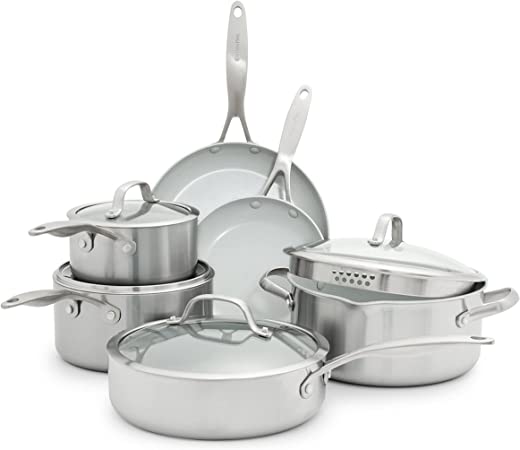
Pros
- Incredibly durable and lasts a long time.
- Safe for most types of cooking and doesn’t react with food.
- Doesn’t rust or get stained, and it can’t be easily damaged.
- Works on all kinds of stoves, even induction stoves.
Cons
- Doesn’t spread heat evenly, which can lead to uneven cooking.
- It’s heavy and some people may find it hard to use.
- Might cost more than other types of cookware.
- Takes a bit more work to clean and keep in good shape.
Aluminum – This material is great for making cookware because it conducts heat really well and it’s lightweight. It’s a flexible material that can be shaped into different sizes and shapes, which makes it good for all kinds of cooking.
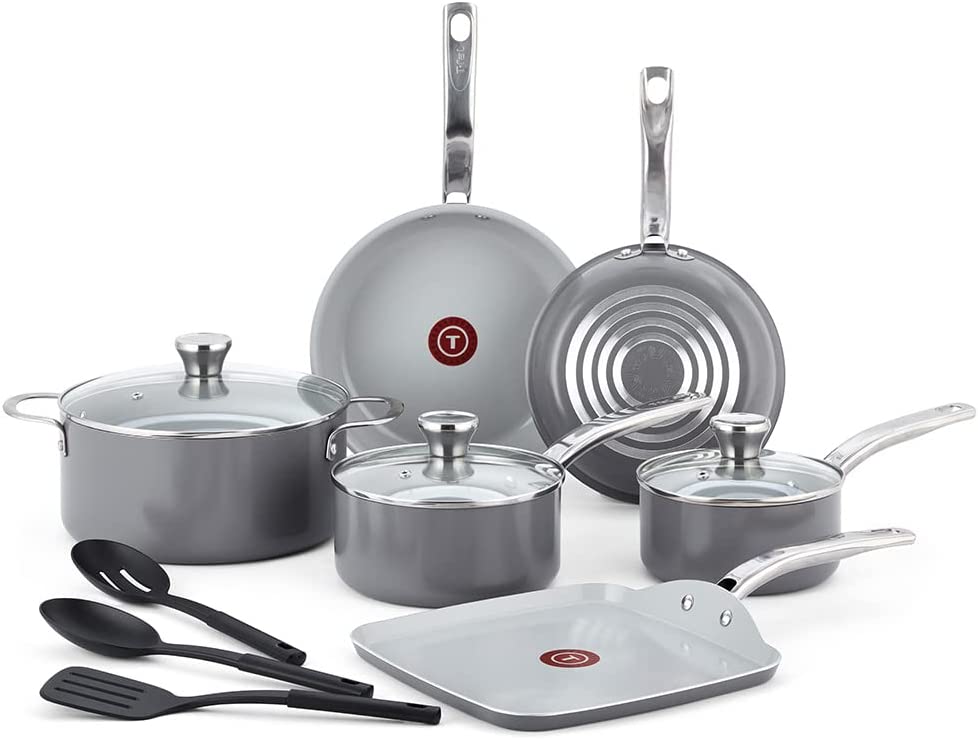
Pros
- It’s really good at conducting heat, so your food cooks evenly
- It’s lightweight and easy to use
- It’s cheap and easy to find
- You can use it on any kind of stove, including induction stoves (as long as it has a stainless steel or magnetic bottom)
Cons
- Prone to warping and scratching
- Reactive to acidic foods, such as tomatoes or citrus
- It changes color and stains over time
- It might not last as long as other materials
Uncoated Cast iron – is another popular cookware material. It’s super strong and you can use it for all kinds of cooking, from frying to baking. Cast iron cookware is also good at keeping heat in, so it’s a good choice for foods that need to cook for a long time.
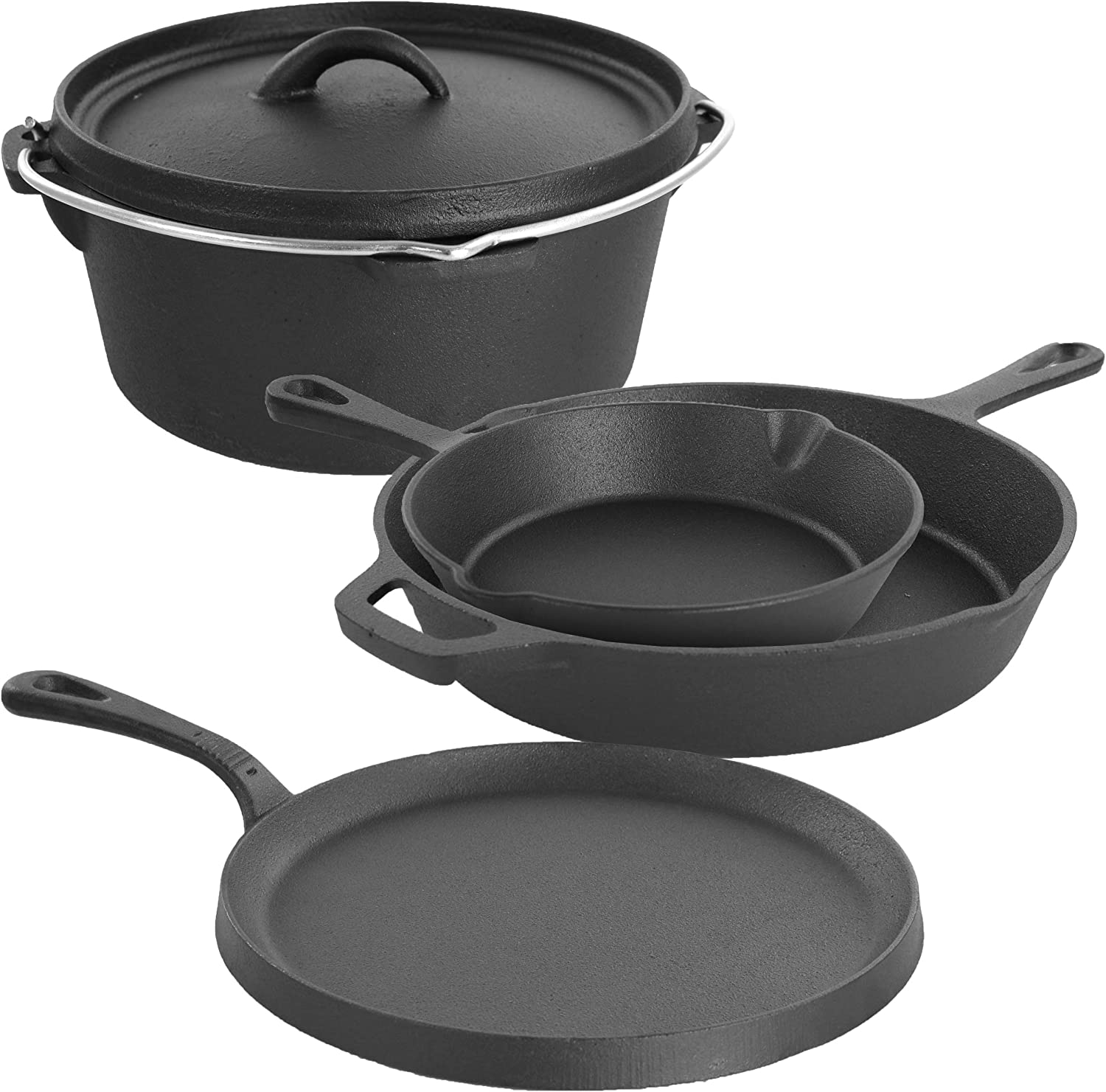
Pros
- It’s really good at keeping heat in and spreading it evenly, so your food cooks evenly
- It’s strong and will last a long time if you take care of it
- You can use it on any kind of stove, including induction stoves
- It can add iron to your food
Cons
- It’s heavy and can be hard for some people to use
- It needs more care, like seasoning and careful cleaning
- It can react with acidic foods, like tomatoes or citrus fruits
- It can rust if you don’t take care of it properly
Enameled cast iron – this type of cookware is just cast iron that’s been covered with a layer of enamel, which is usually made of glass. This gives it a smooth, non-stick surface that’s easy to clean. People like enameled cast iron cookware because it heats evenly and keeps heat in, making it perfect for slow-cooking and braising.
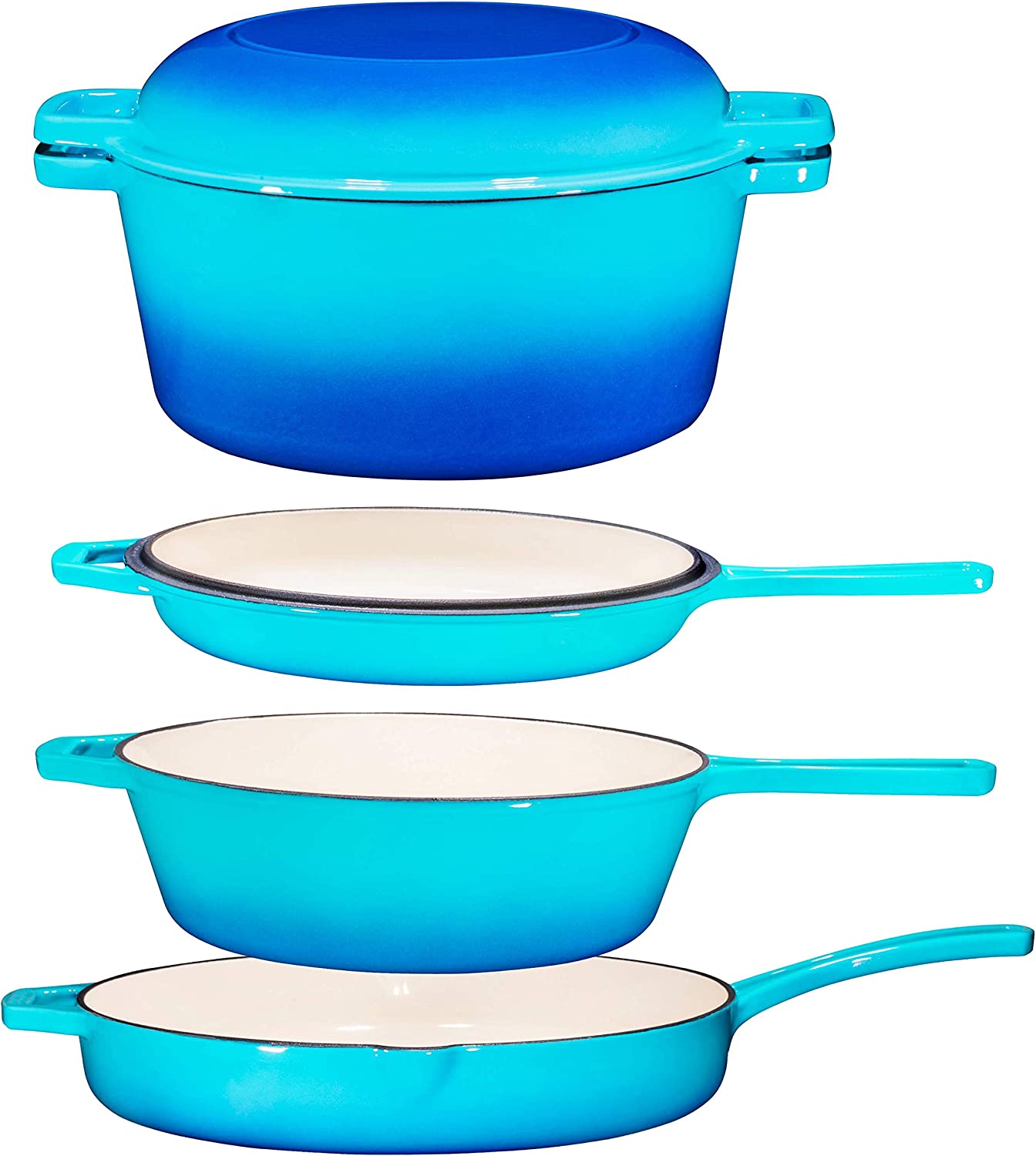
Pros
- It’s great at keeping heat in and spreading it out evenly.
- It can be used on many different kinds of stoves, including induction stoves.
- The surface doesn’t react with food, so it won’t give your food a metallic taste if you’re cooking something acidic.
- It’s easy to clean and keep in good shape.
- It looks nice and you can also get it in many different colors.
Cons
- It’s heavy and can be hard to handle
- It can chip or crack if you don’t handle it carefully
- It’s more expensive than other types of cookware
- The enamel coating might change color or fade over time
- It’s not good for cooking at high temperatures or for searing food
Copper – this material is really good at conducting heat, so it’s a great choice for cookware. Copper cookware also looks really nice, with a warm, classic look. However, copper can be expensive and it needs regular care to keep it looking and working its best.
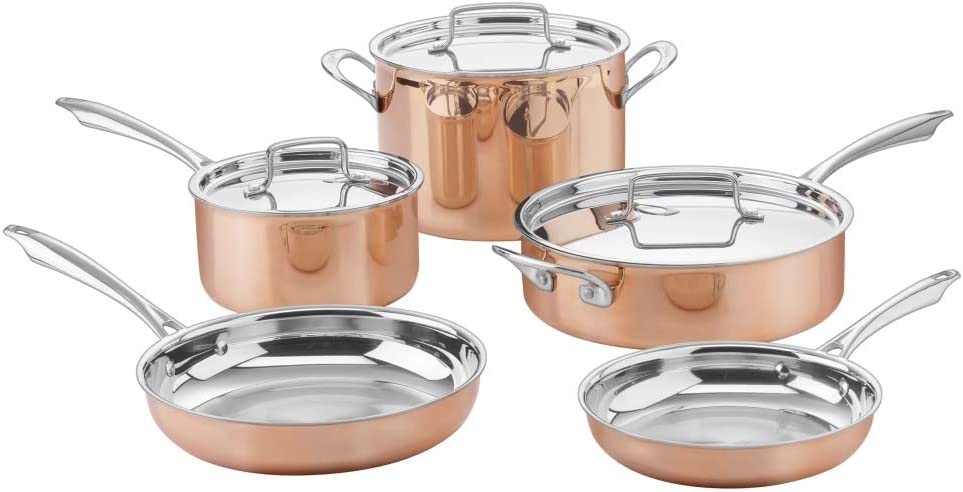
Pros
- It’s excellent at conducting heat, so you can control the temperature really well
- It looks beautiful and stylish
- You can use it on any kind of stove, including induction stoves (as long as it has a stainless steel or magnetic bottom)
- It’s strong and will last a long time if you take care of it
Cons
- It’s very expensive and not as easy to find as other materials
- It needs more care, like polishing and re-tinning (if it’s unlined)
- It can react with acidic foods, like tomatoes or citrus fruits
- It can change color and tarnish over time
Non-stick cookware – This is another common choice. These pots and pans are covered with a non-stick material that makes them easy to clean and keeps food from sticking. However, non-stick cookware might not last as long as other materials, and it’s not good for cooking at high temperatures.
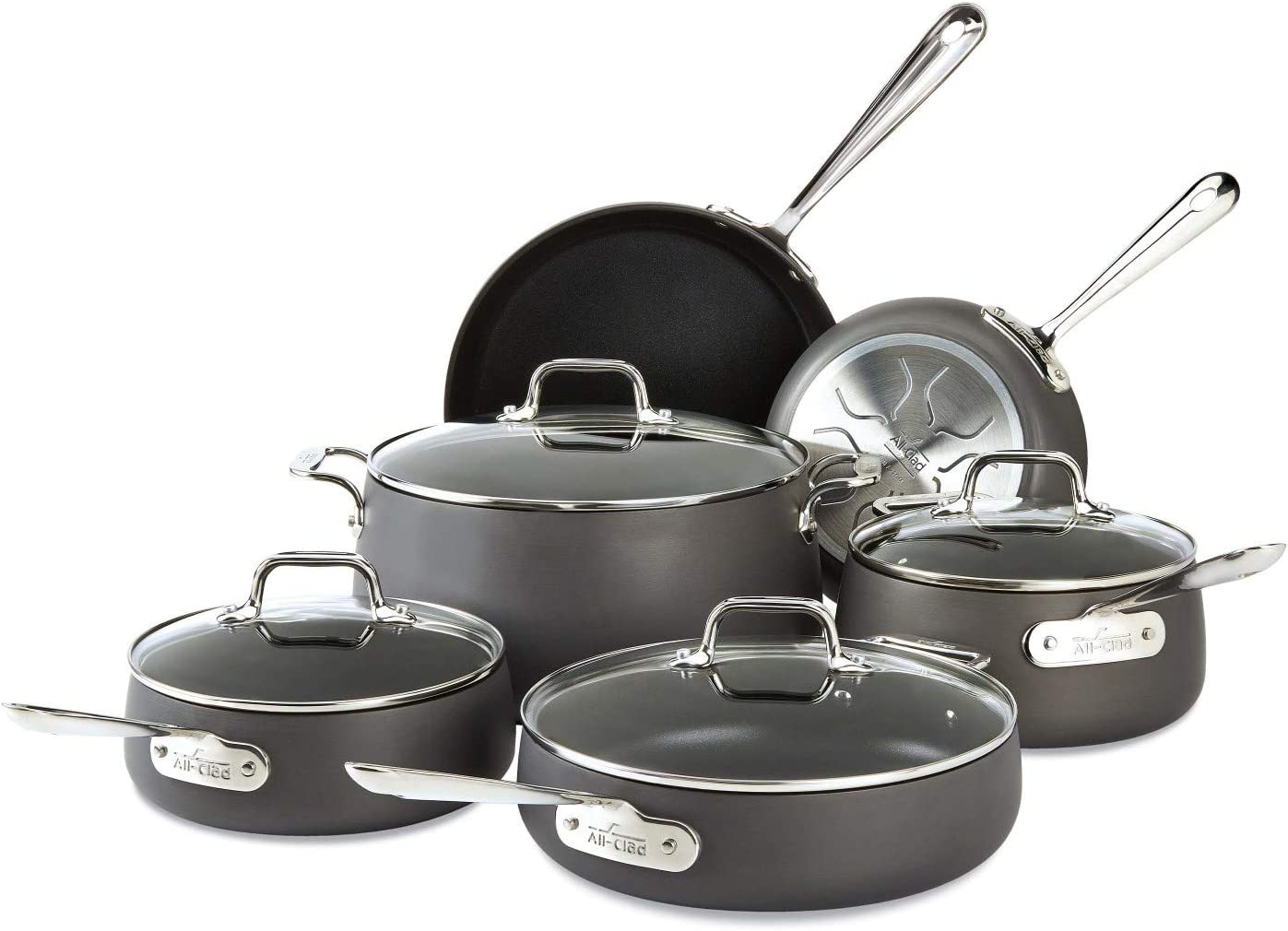
Pros
- It’s easy to clean and food doesn’t stick to it
- You can use less oil and butter, which makes your food healthier
- It’s cheap and easy to find
- You can use it on any kind of stove, including induction stoves (as long as it has a magnetic bottom)
Cons
- It might not last as long as other materials and you might need to replace it more often
- It can scratch and peel over time, which might release harmful chemicals
- You can’t use it for cooking at high temperatures or for certain cooking methods, like searing or broiling
- You need to be careful when you’re cooking with it, like avoiding metal utensils and using low to medium heat only
Ceramic – This material is popular with both home cooks and professional chefs. It’s made from a mix of natural materials, like clay, sand, and quartz, and it’s known for its non-stick properties and its ability to spread heat evenly.
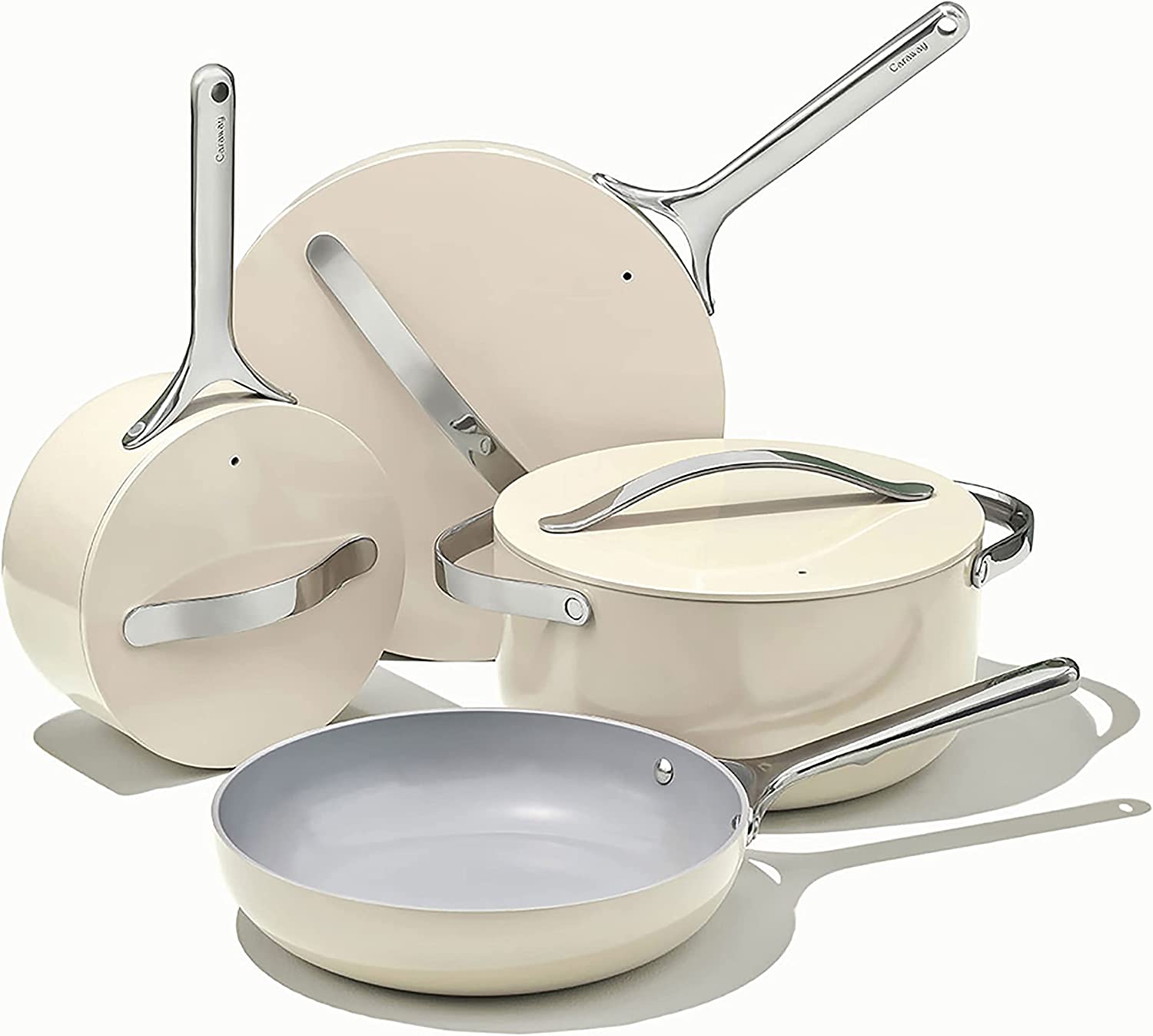
Pros
- The surface doesn’t react with food, so it won’t change the taste or color of your food
- The non-stick coating means you need less oil or butter for cooking
- It’s lightweight and easy to use
- It can be colorful and look nice
- It’s usually safe to put in the dishwasher
- Ceramic cookware doesn’t have chemicals like PFOA, PFAS, and cadmium
Cons
- Not as durable as some other materials, may chip or crack
- Can be more expensive than other materials
- Non-stick coating can wear off over time and scratch easily
- It’s not good for cooking at high temperatures or for searing
- You might need to take special care when cleaning it to keep the non-stick surface
Titanium – is a relatively new material in the cookware market. It’s a durable and non-reactive material that has been gaining popularity in recent years. It’s also lightweight, strong, and has excellent heat distribution, making it a popular choice among professional chefs.
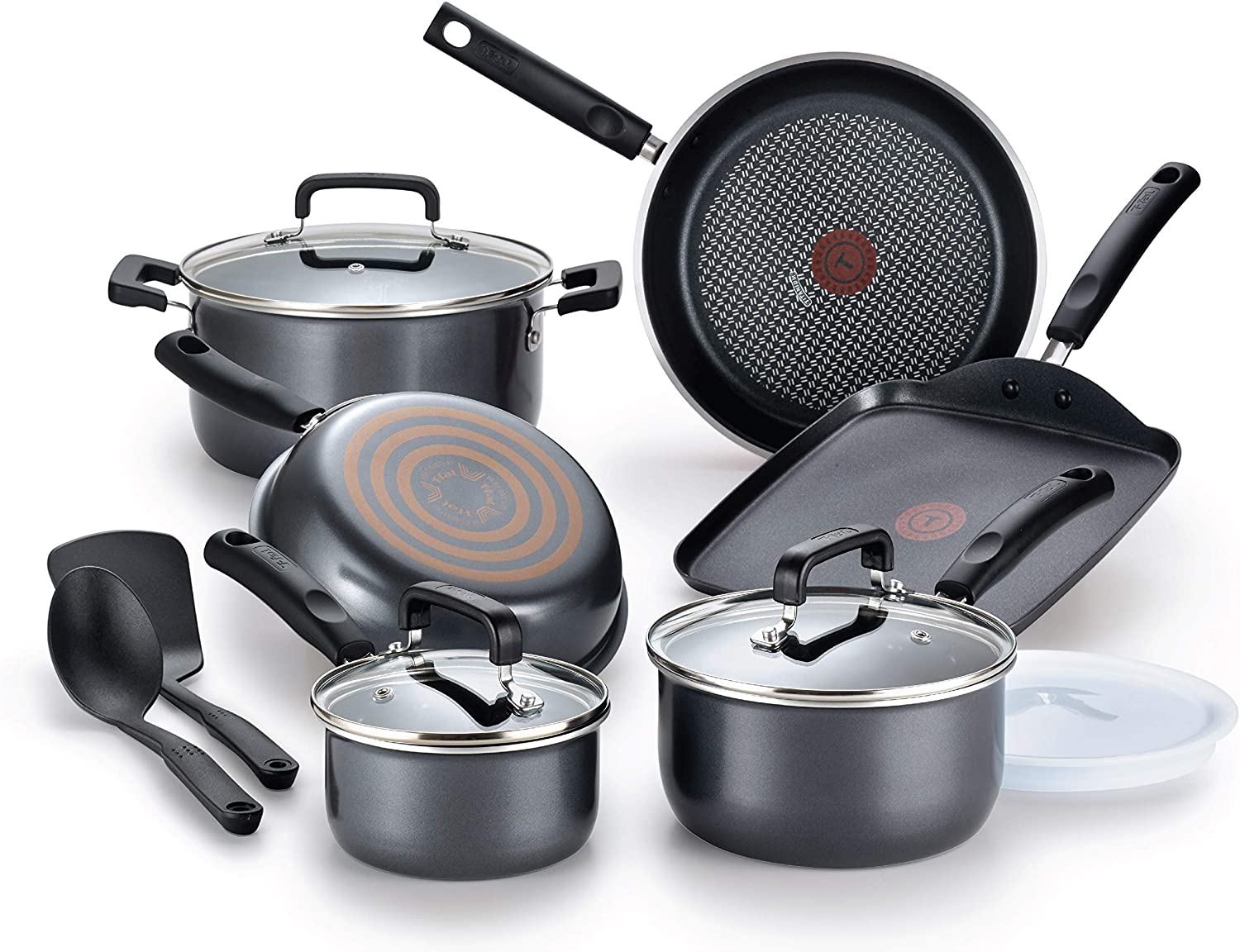
Pros
- It’s lightweight and easy to use
- It doesn’t scratch or get damaged easily
- It doesn’t react with food, so you can cook acidic foods with it
- It can handle high temperatures
- It keeps heat for a long time, which can save energy and keep food warm
Cons
- It’s more expensive than other materials
- Food can stick to it if you don’t season it properly
- You need to take special care when cleaning it to keep it in good shape
- You can’t use it on induction stoves
- It can change color and get stained over time
Carbon steel – This type of cookware is made from a mix of steel and carbon. The amount of carbon can vary, but it’s usually between 0.6% and 1.5%. This makes the material stronger and more durable than regular steel. Carbon steel cookware is really good at heating up quickly and evenly, making it a popular choice among professional chefs.
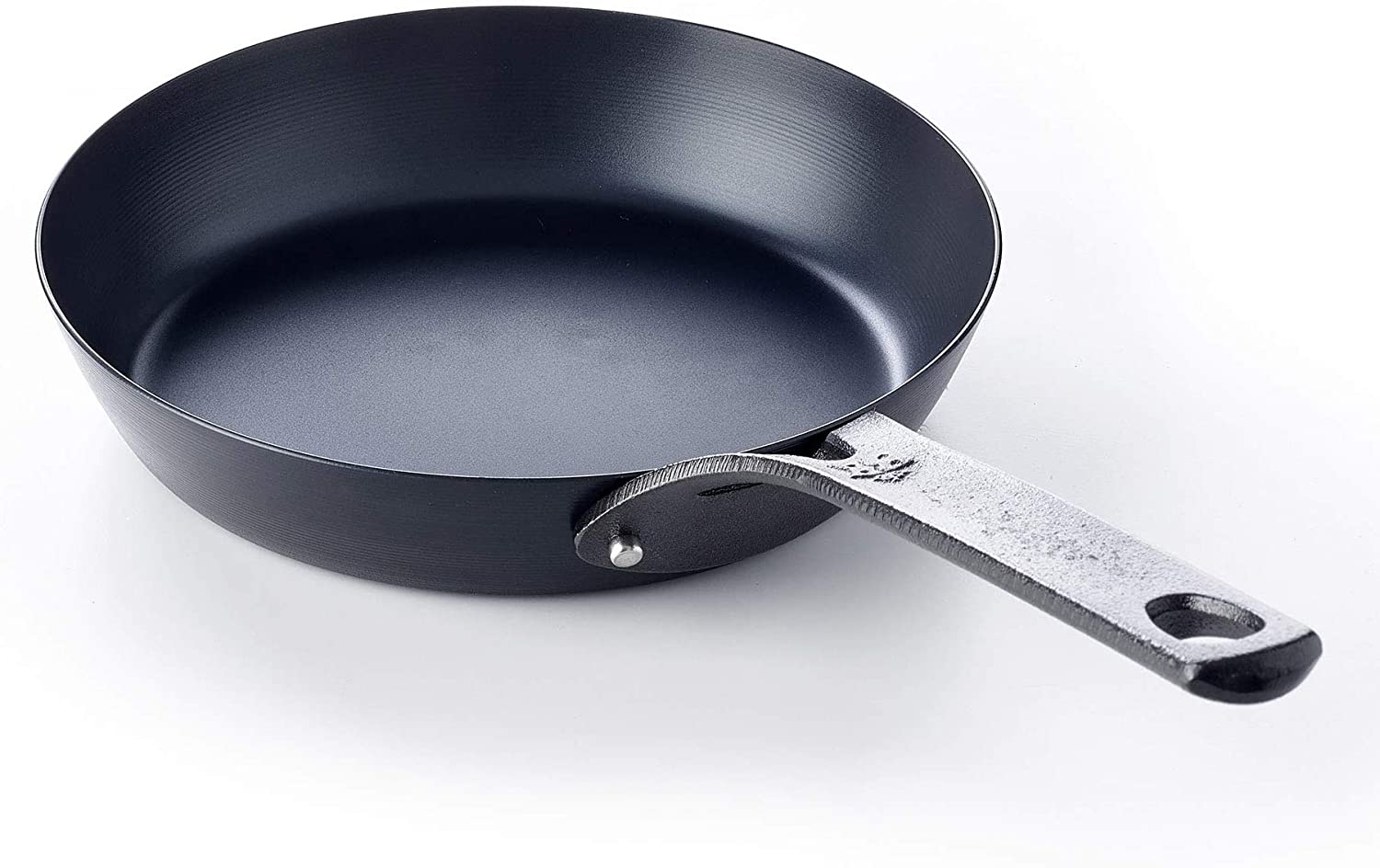
Pros
- It’s durable and lasts a long time
- It spreads heat really well and evenly
- It’s lightweight and easy to use
- You can make it non-stick by seasoning it
- It’s good for cooking at high temperatures, like stir-frying
- You can use it on any kind of stove, including induction stoves
Cons
- You need to season it and take care of it to keep it from rusting
- You can’t put it in the dishwasher
- It can react with acidic foods, which can change the color and taste
- It can warp if you change the temperature too quickly
- It’s not as non-stick as other materials, like pans coated with Teflon
Blue steel – This is a type of carbon steel that a lot of professional kitchens use. It’s called blue steel because the surface of the metal turns blue-black after you use it for a while. Blue steel is really good at keeping heat and spreading it evenly, so it’s a popular buying choice for when you need a frying pan and wok.
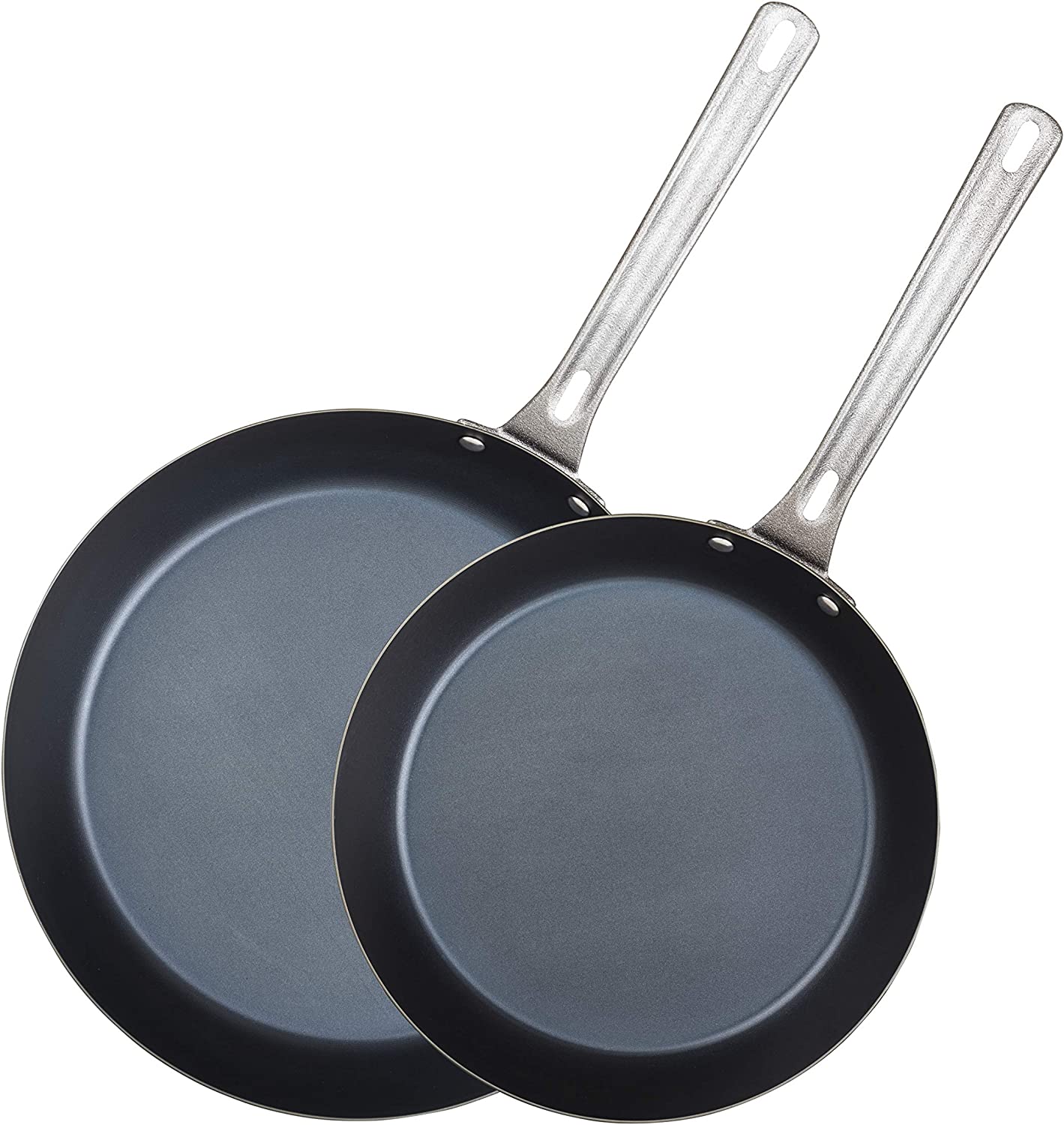
Pros
- Excellent heat distribution and retention
- Naturally non-stick when seasoned properly
- Durable and lasts a long time
- It’s lightweight and easy to use
- It can handle high heat and quick changes in temperature
Cons
- Requires seasoning and special care
- It can rust if you don’t season it or dry it properly
- Reactive with acidic foods, which can affect the taste and appearance of your food
- It’s not good for cooking very acidic foods, like tomatoes or citrus fruits
- Not dishwasher safe
Different Types of Pots and Pans That Are Usually Included In A Cookware Set
You can find cookware sets in many different sizes. Some sets have just a few pieces, while others have over 20 pieces. When you’re picking a set, you should think about how many pieces you need and what kinds of pots and pans are in the set.
A simple cookware set might have a few saucepans, a skillet, and a stockpot for making soup or boiling pasta. If a set has more pieces, it might also have a sauté pan for browning meat, a griddle for making pancakes, or a special kind of pot called a Dutch oven. You should think about what you usually cook and what dishes you like to make when you’re picking a set.
Most frequently included pots and pans in a cookware set:
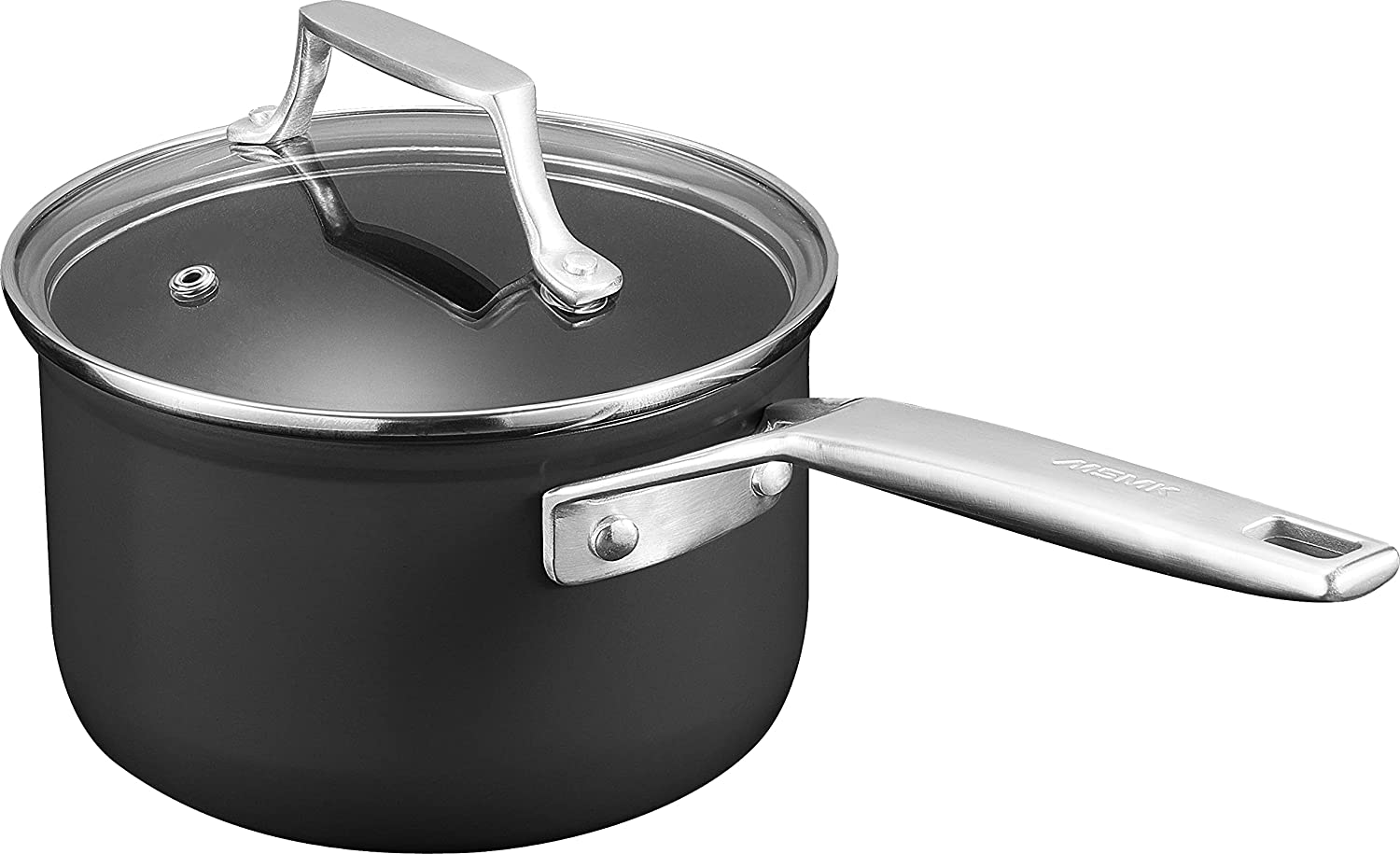
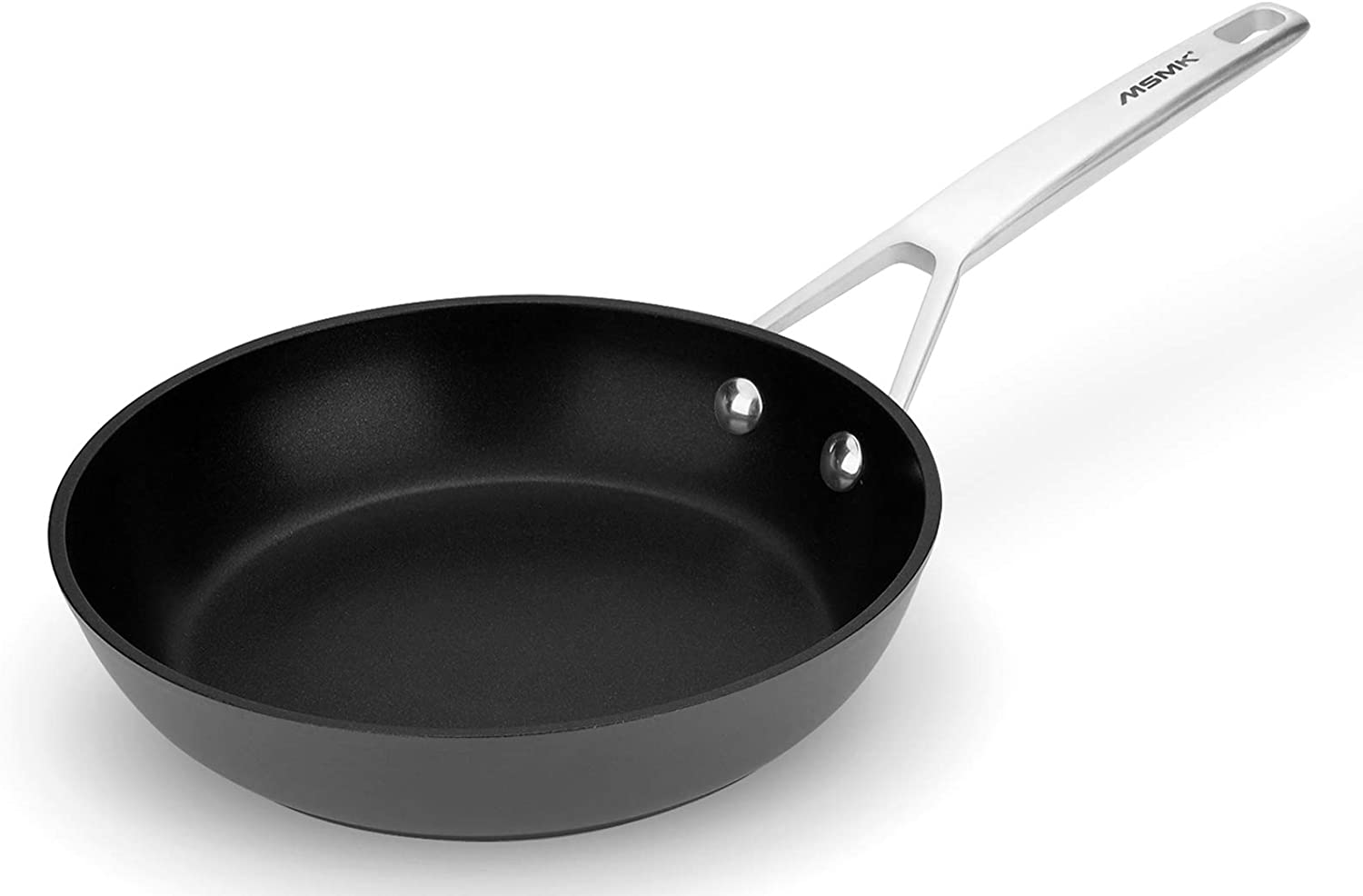
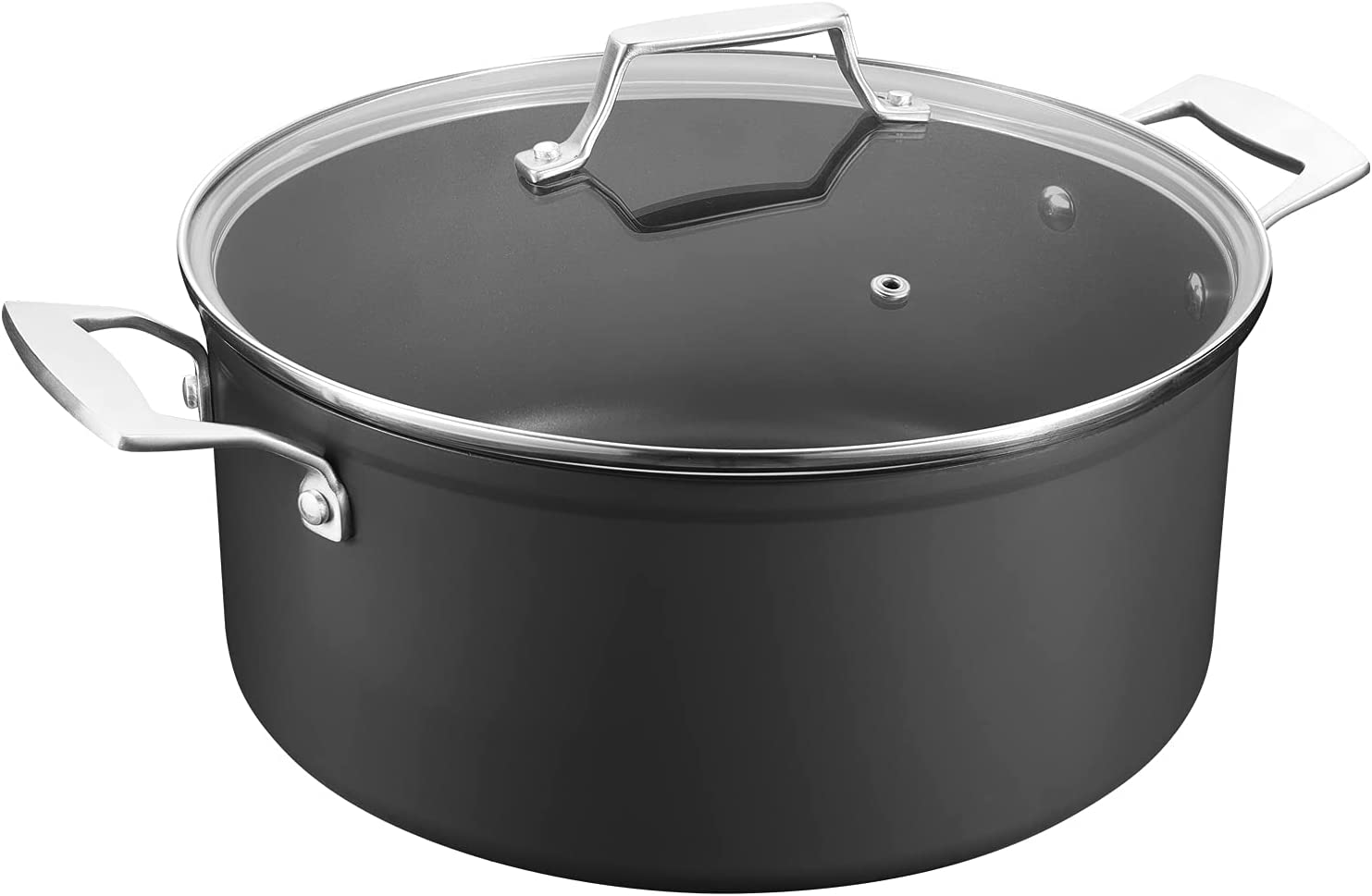
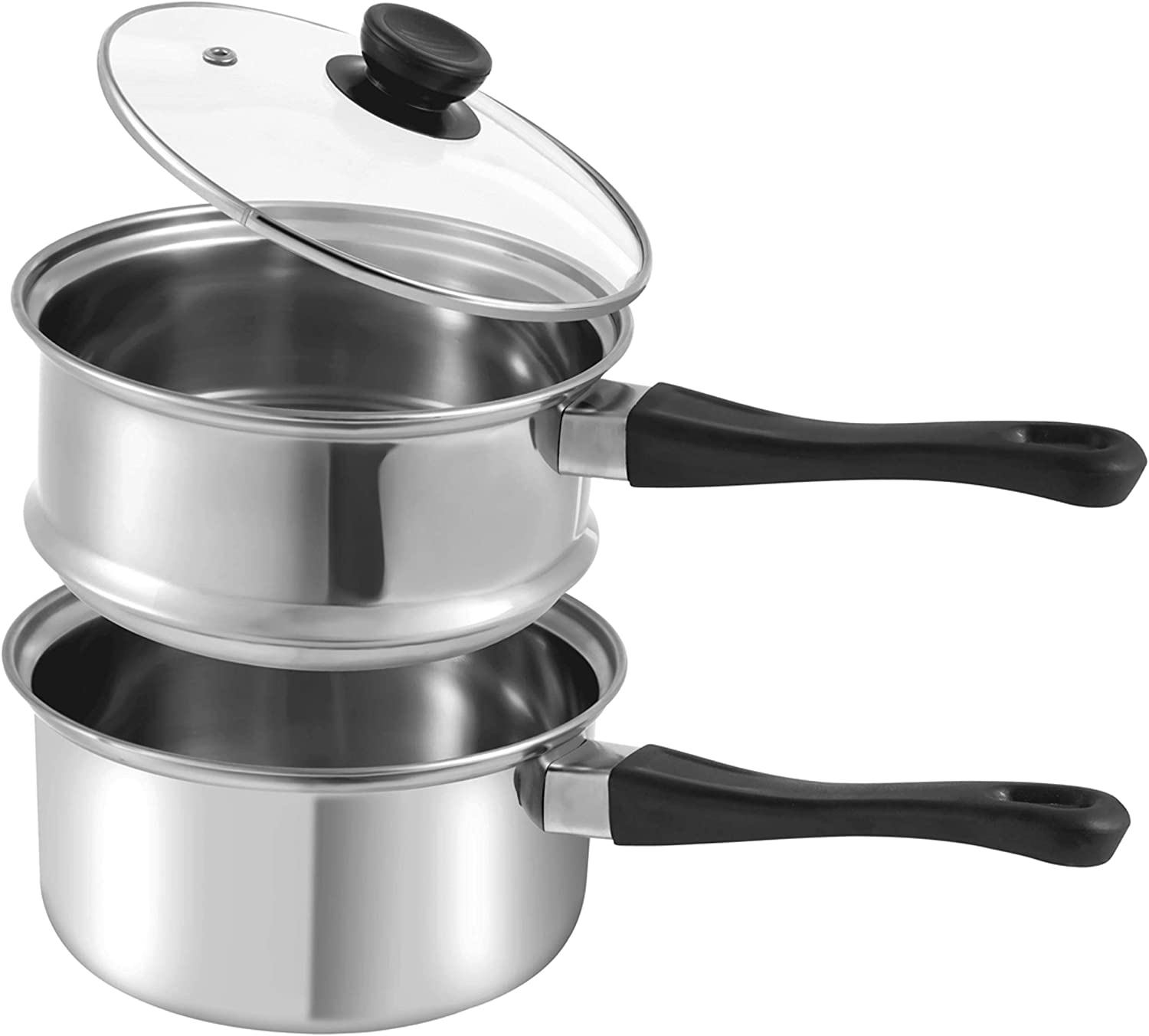
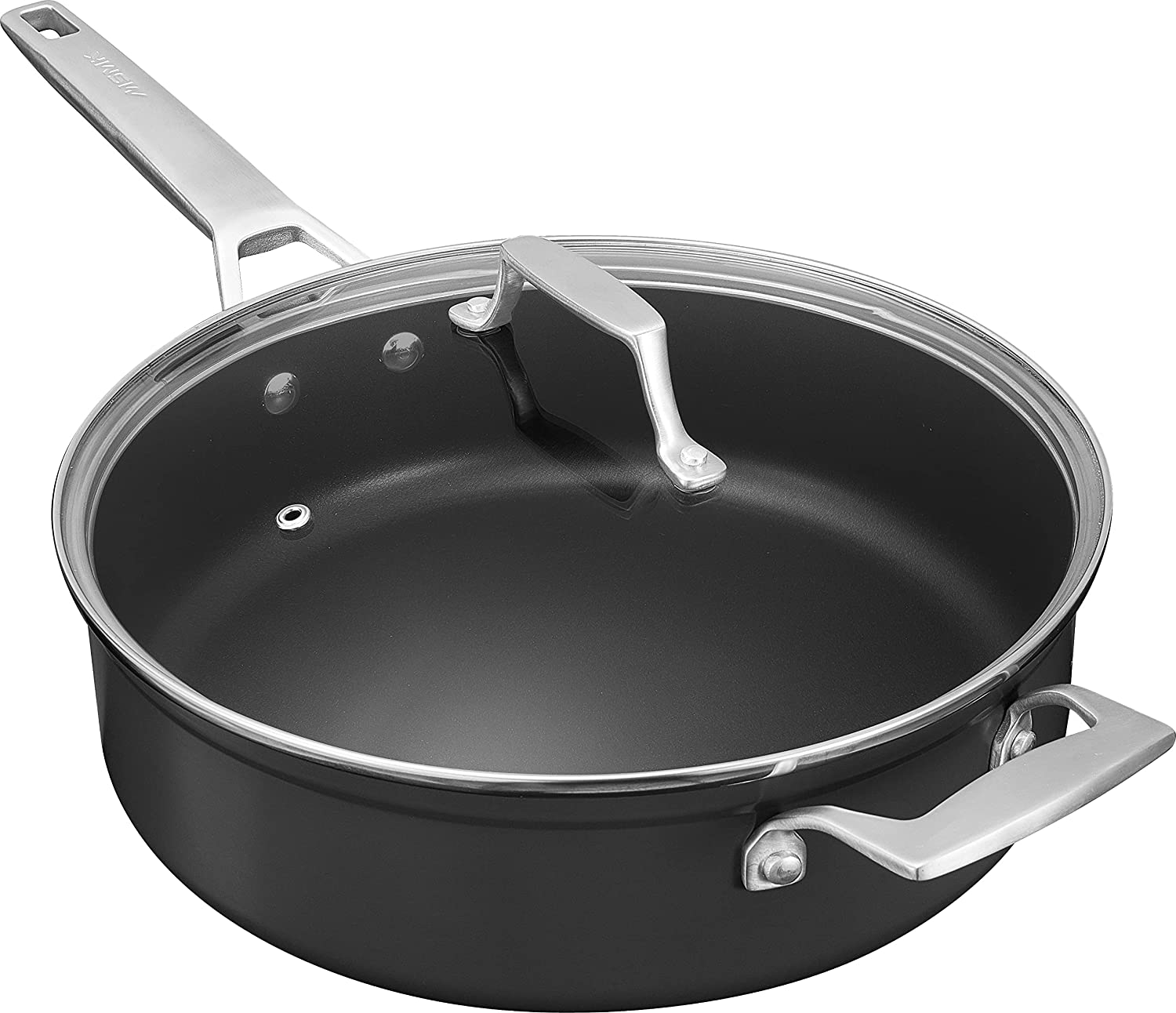
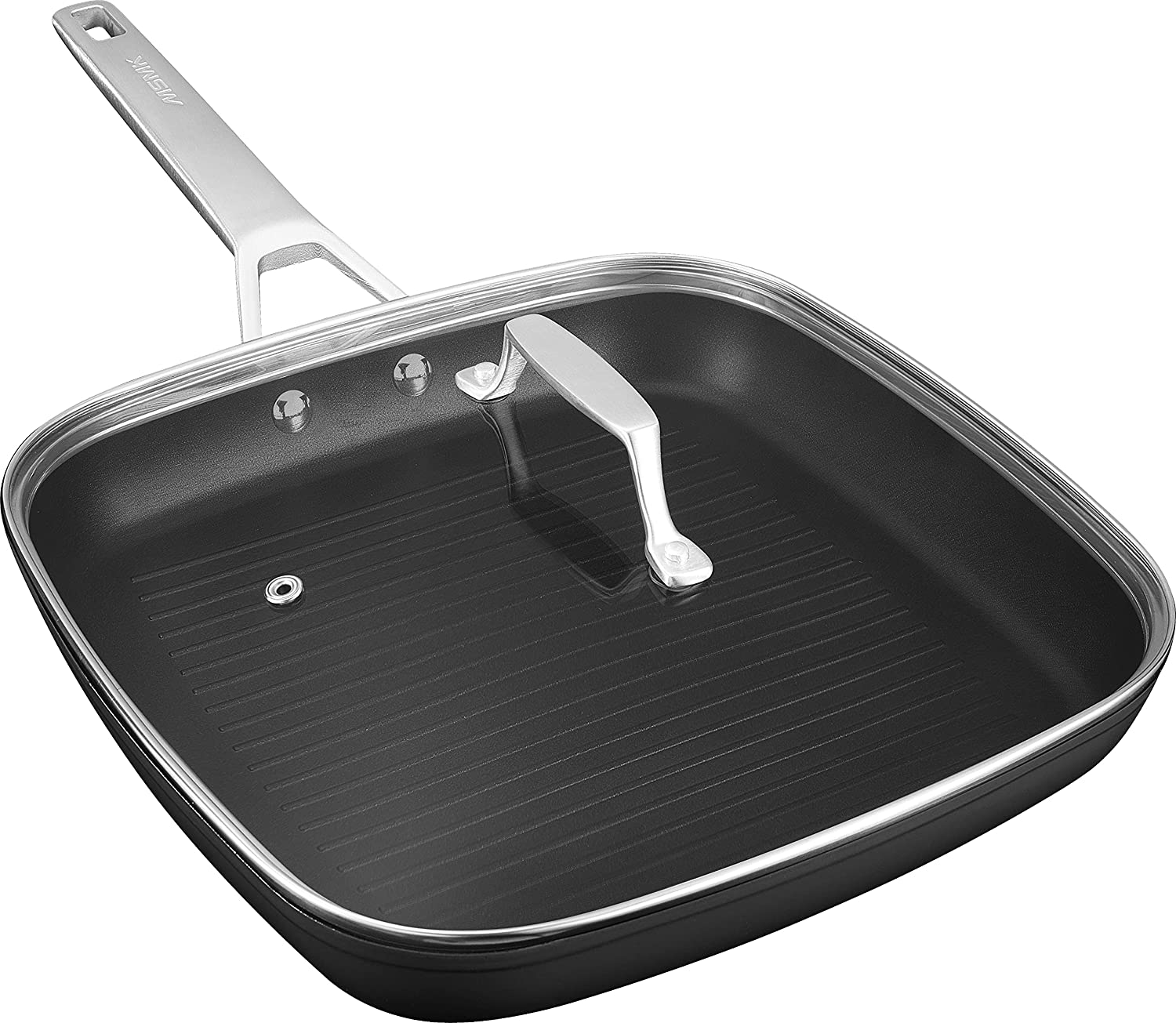
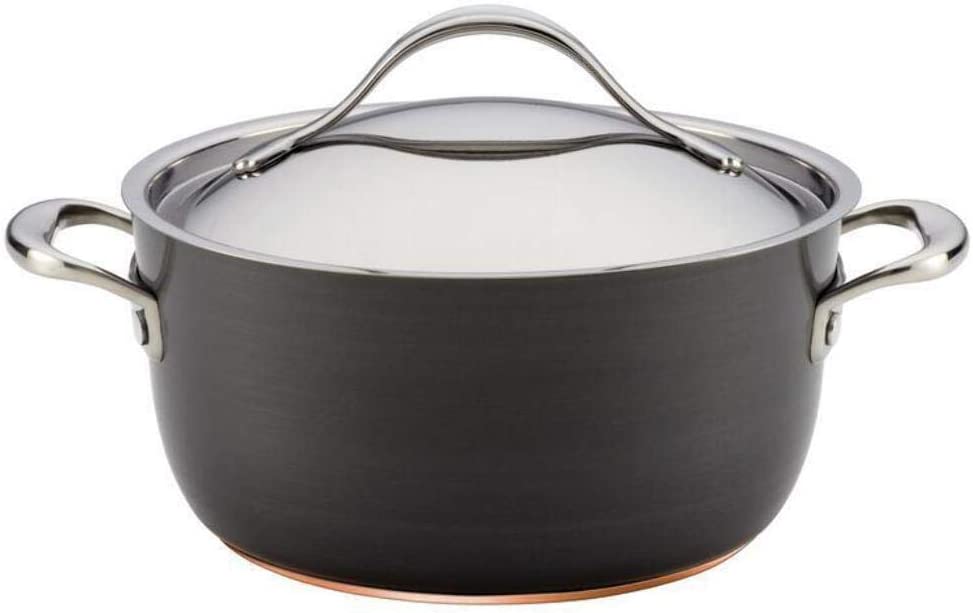
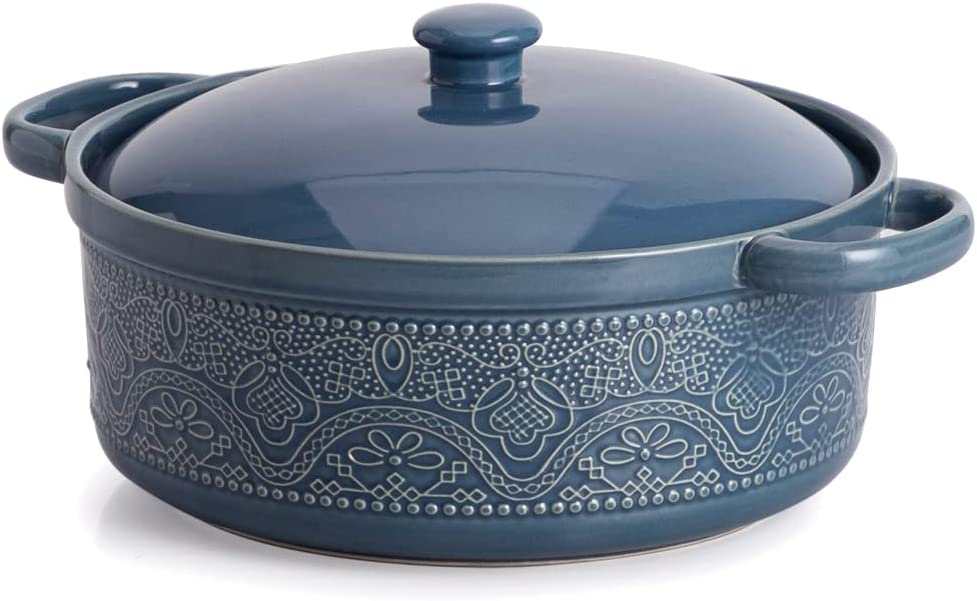
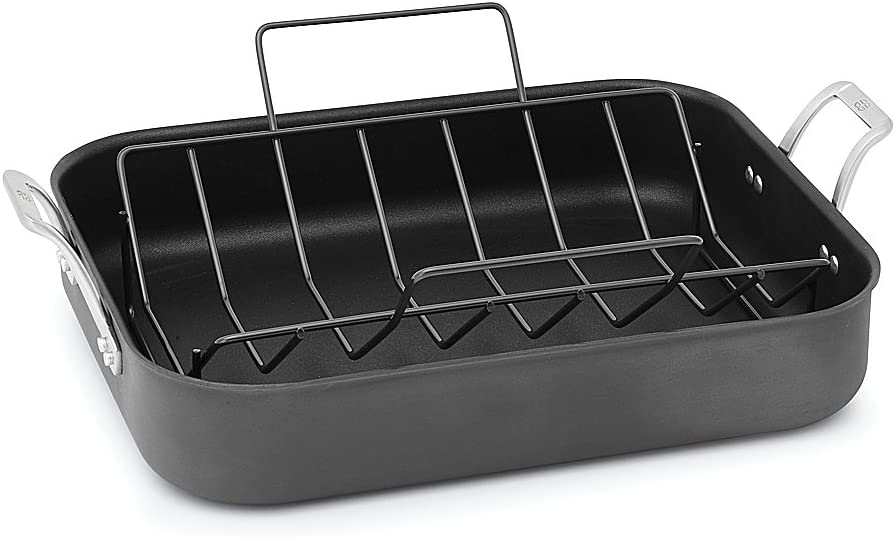
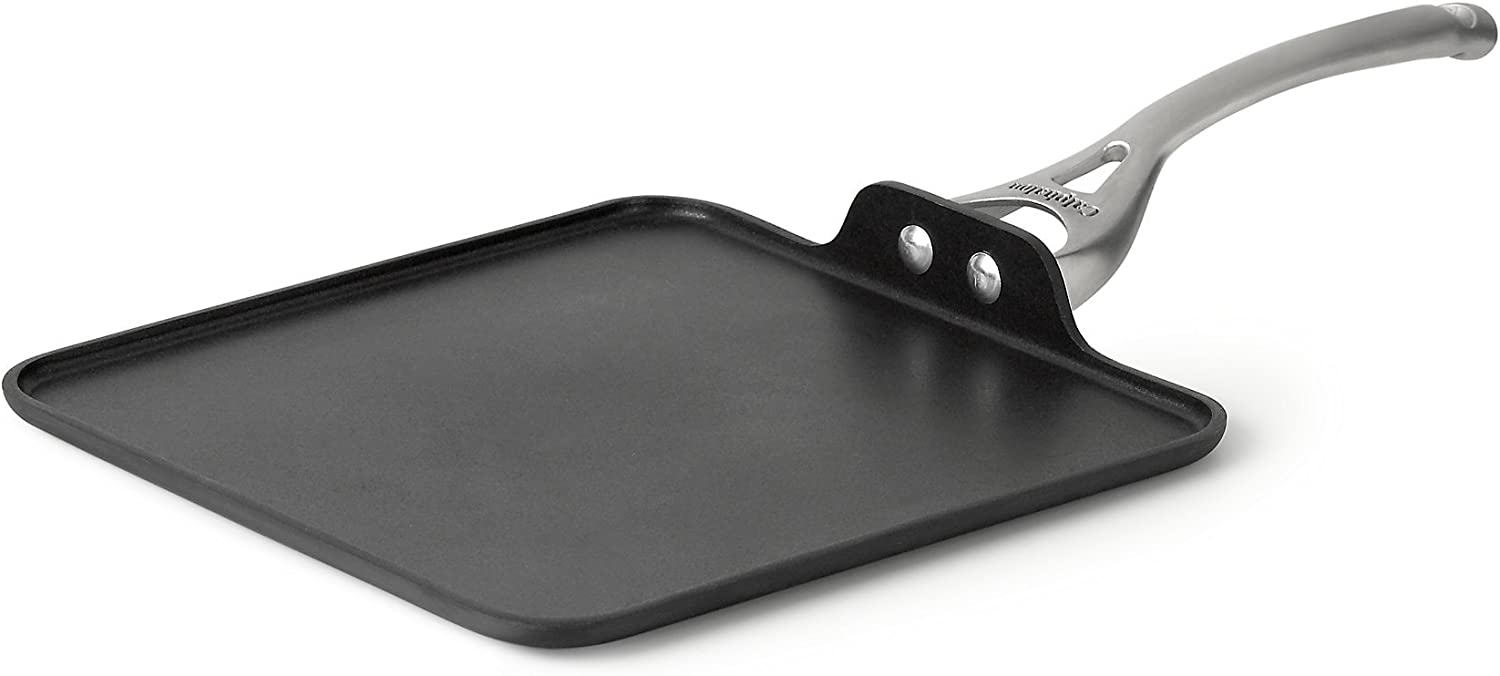
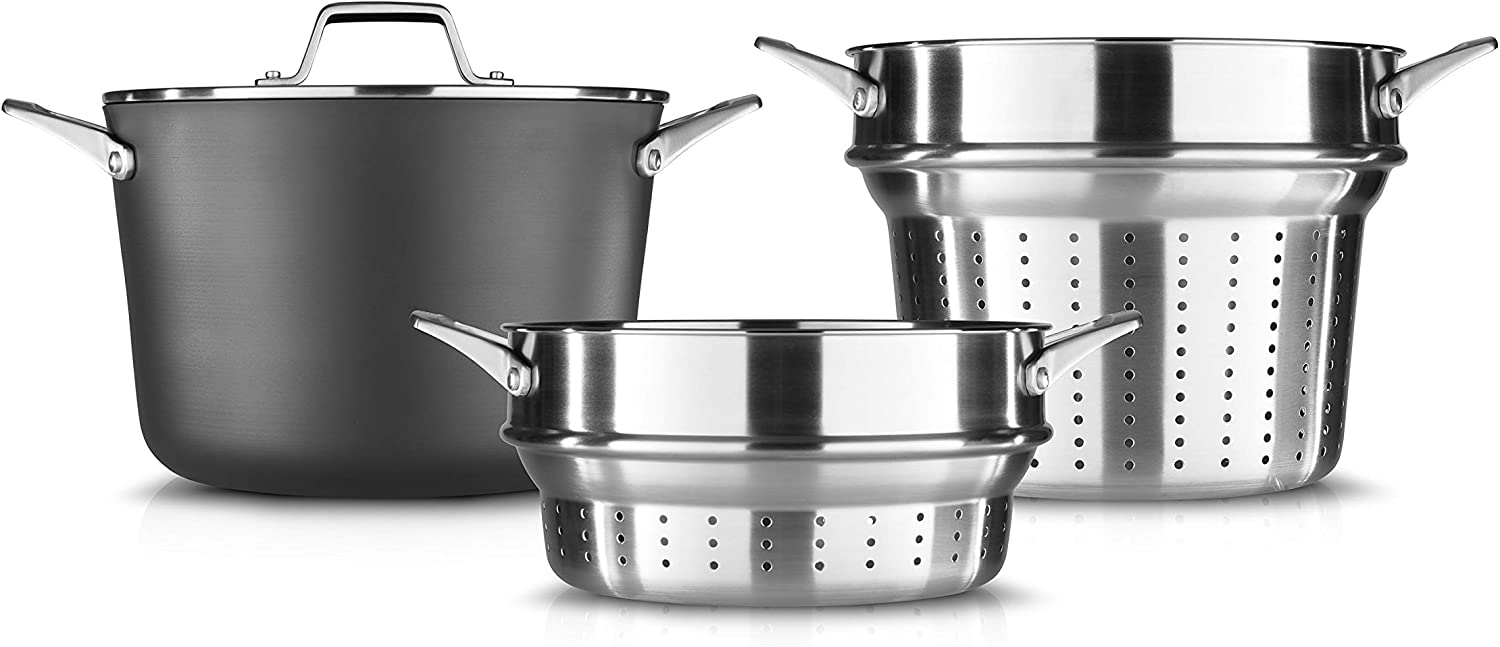
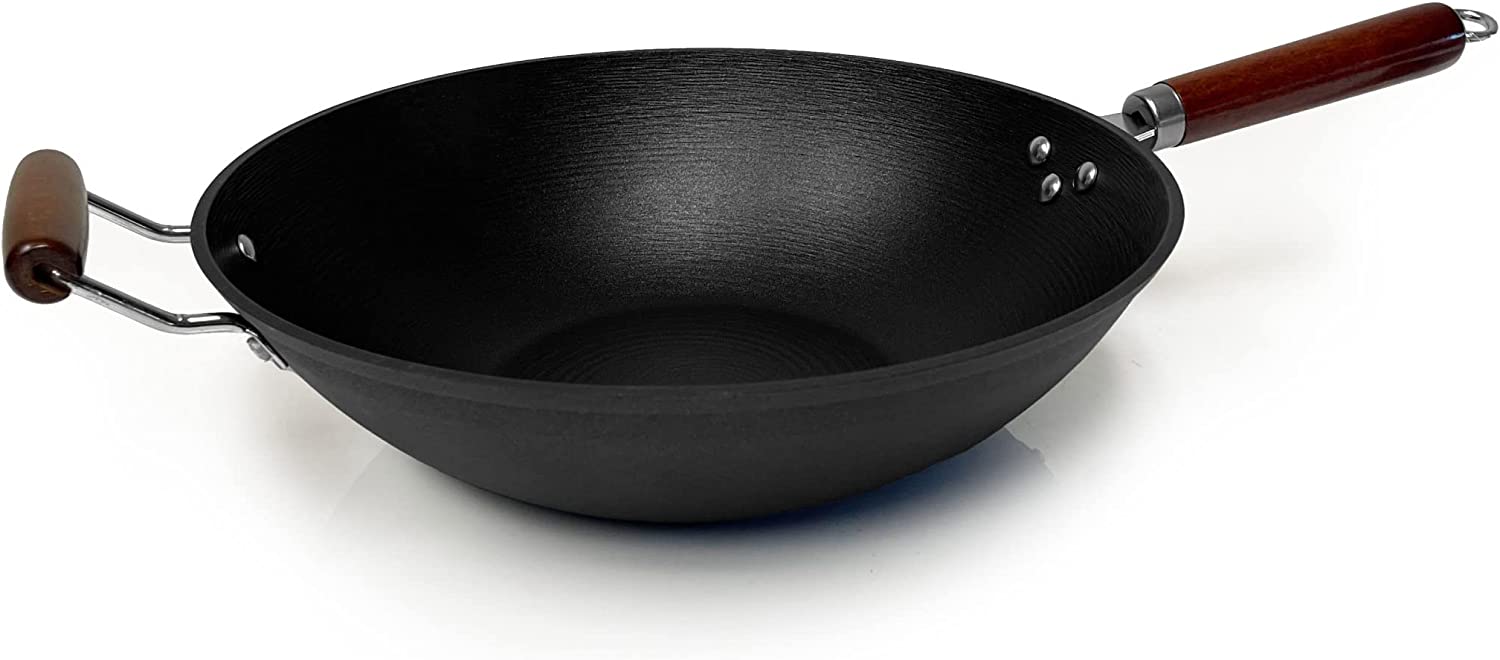
Our Analysis
Each piece has a specific purpose in the kitchen, and the right combination of pieces in a cookware set can make cooking a lot easier and more enjoyable.
Quality Of The Pots and Pans
Choosing a good quality cookware set is really important. If you choose a set that isn’t very good quality, you might have to replace it after only a few times using it. But if you choose a good quality set, it can last for many years.
Try to find cookware sets that are made from strong materials like stainless steel or cast iron. Check how heavy the pots and pans are, because heavier cookware is usually stronger.
Low-Quality Cookware Sets:
A low-quality cookware example might be a non-stick pan with a flimsy, lightweight construction and a coating that scratches easily.
High-Quality Cookware Sets:
A high-quality cookware example could be a tri-ply stainless steel pan with a heavy, durable construction, ergonomic handles, and excellent heat distribution.
It’s also important to consider the quality of the handles and lids on the cookware. Handles should be sturdy and comfortable to grip, while lids should fit tightly and securely.
When it comes to lids, low-quality cookware often comes with flimsy or ill-fitting lids that don’t fit very well. This can let out heat and moisture when you’re cooking. In contrast, high-quality cookware usually has tight-fitting, well-constructed lids with a silicone seal that help to trap in heat and moisture. Leading to more flavorful and evenly-cooked food. Additionally, high-quality lids might also have tempered glass, allowing you to easily monitor your cooking progress without having to lift the lid and release heat.
Low-Quality Handle:
A low-quality handle is plastic handle that is not securely attached to the cookware. It feels flimsy, and can easily break or melt under high heat. The plastic handles are typically made out of materials like polypropylene. polypropylene is not as durable or heat-resistant as higher quality materials like silicone or stainless steel.
High-Quality Handle:
A high-quality handle may be made of a heat-resistant material such as stainless steel and silicone. The Stainless steel is riveted or welded securely to the cookware – designed for a comfortable and ergonomic grip. Some high-end cookware brands even offer interchangeable handles that allow you to switch between different types of handles depending on your cooking needs.
Stovetop Compatibility
When you’re shopping for a cookware set, you should also think about what kind of stove you have. Not all cookware works on all kinds of stoves, so make sure to check what the maker of the cookware recommends before you buy it.
Gas stovetops are the most common type, and can accommodate most types of cookware. Electric stovetops may require cookware with a flat bottom to ensure even heating. Induction stovetops require cookware made from magnetic materials like stainless steel or cast iron.
How Material Choices Impact Price Range
The cost of cookware sets can vary a lot, from under one-hundred dollars to thousands of dollars. Even though it might be tempting to just buy the cheapest set, remember that quality and durability are important things to think about when you’re choosing a cookware set.
Cookware Set Prices by Material:
Remember, these are just general price ranges. The actual price can change depending on the brand, size, and special features of the cookware set.


